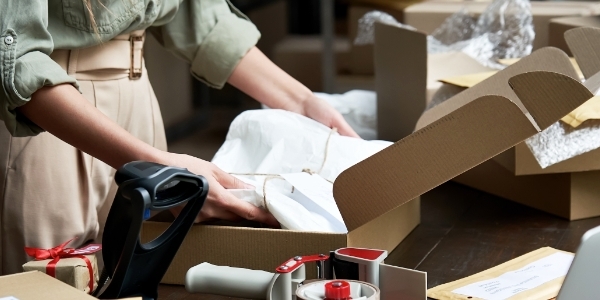Reduce Your Ecommerce Store Costs by Following These 6 Steps

Reducing your eCommerce store costs is a common goal for many entrepreneurs. Everyone wants to find ways to save money, and cutting back on unnecessary expenses such as product packaging is one of the best ways to achieve this. This post will outline six different steps that you can take to reduce your costs without compromising quality or customer satisfaction. Follow these tips, and you'll be well on your way towards reducing those pesky overhead expenses!
Reduce Product Returns
One way you can reduce costs is by reducing product returns. One of the most expensive parts of running an online store is paying for customer returns - these expenses account for a whopping £30.7 billion in lost revenue (according to Returnly). To keep your return rates low, ensure that all your products are fully explained and backed up with clear images before putting them on sale. Also, be honest when describing any features or flaws so that customers know what they're buying beforehand instead of getting surprised down the line after receiving their order.
Invest In Sustainable Ecommerce Packaging
One way you can reduce costs is by investing in sustainable eCommerce packaging solutions. In 2017, it was reported that the average British household spends more than £380 annually on disposables (which averages out to about three billion disposable items per year). What's worse is that around one-third of these items are not recycled - they're just thrown into a landfill.
You might be wondering: what does this have to do with your business? As an online seller, there are many ways you can contribute towards reducing this waste and cutting down on expenses simultaneously! One example would be switching from traditional plastic packaging materials such as polystyrene to more sustainable alternatives like bioplastic (#BOPP) bags which are more sustainable packaging in the long run. Bio-plastic bags are made from sustainable packaging materials such as cornstarch and tapioca, so they're good for the environment too.
The Free Shipping Sweet Spot
This is the number of your products and shipping costs that it takes to balance out with free shipping. For example, if you sell a £50 product and offer free shipping, then this means that there's only one more sale needed for you to cover the cost. The idea behind all of this is every time someone purchases an item from your store; they're also getting a discount on their next purchase since traditional methods like coupons are often overlooked when shopping online. On top of not having additional expenses or overhead costs incurred by printing off paper vouchers, negotiating discounts with retailers, or dealing with customers who refuse to take advantage of offers - these savings add up quickly!
Utilise Marketing Metrics
Marketing metrics are the measurable information about a marketing campaign. There are three main types of Marketing Metrics:
- Sales & Revenue,
- Reach or Impressions (how many people see your ads), and
- Conversions (what percentage of impressions lead to sales).
Examples include the number of purchases made per day, cost per click for an ad on Facebook Advertising Network etc.
The metric you want is "conversion" to track how much was spent in advertising vs what came back from it - this will allow you to know where money should be spent next time around! This way, if someone spends £300 but gets no conversions, then they're not making any profit at all.
Negotiate Better Rates with Your Carriers
Carrier rates are the fees that must be paid for your product to get sent over and distributed with a carrier. These include well-known and trusted companies by most businesses - such as UPS and DHL. These rates vary depending on several factors, including the size and weight of your product, what type of carrier you're using (ex. domestic vs international), the distance it needs to be shipped over etc.
Inventory Management: Dead Stock
Many businesses have problems with Dead Stock because sometimes there's an overestimation of how much something might sell during a particular period (such as Christmas). Therefore, it's essential to keep track of what items may not yet be selling well and then remove them from store shelves before they end up being wasted money in your warehouse!
In conclusion, as you can see, there are many ways to reduce the costs of your eCommerce store. The key is finding what works for you and then applying it!
Struggling With Storage Space? Find Out How Much Space You Can Save By Using Our Easy-To-Store Packaging
Discover how much space you can save by switching to eCommerce packaging by checking out our guide here. Alternatively, you can contact a member of our team by using our quick and easy contact form below. You can also get in touch with a member of the DiamondBox team today on 0121 505 2211 or by emailing us at sales@diamond-box.co.uk. We look forward to hearing from you.